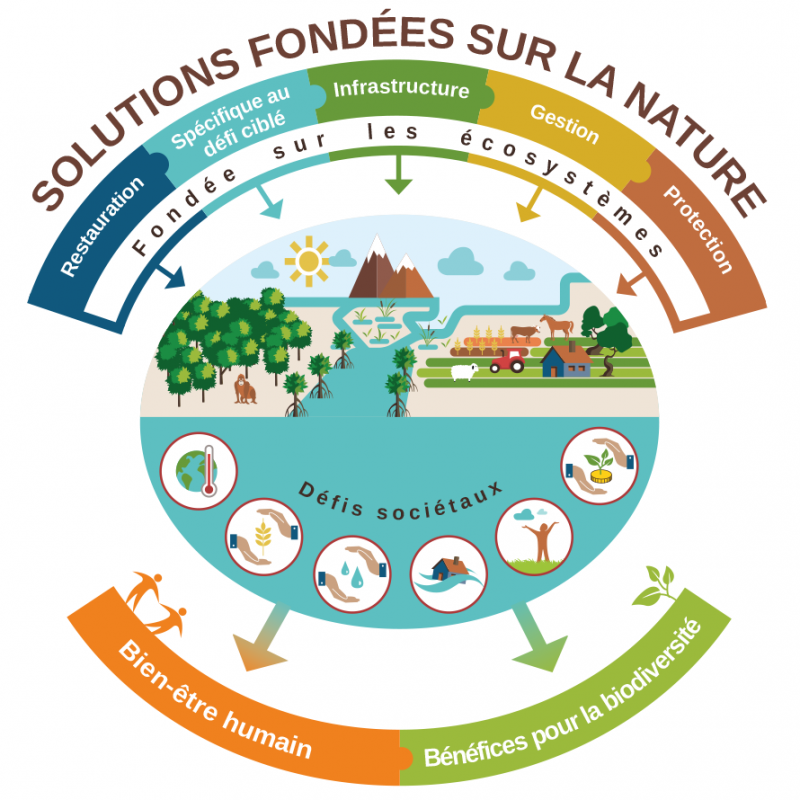Nature-based Solutions (NbS) are defined by the International Union for Conservation of Nature (IUCN) as: “Actions to protect, sustainably manage and restore natural or modified ecosystems that address societal challenges effectively and adaptively, simultaneously providing human well-being and biodiversity benefits.”
They cover three types of actions which can be combined in the field: preserving functioning ecosystems that are in a good ecological state, improving the management of ecosystems for long-term use by human activities, and restoring degraded ecosystems or even creating new ones.
MEETING CHALLENGES EVERYWHERE
NbS can be set up for all kinds of ecosystems: coastal, mountain, forest, plain, agricultural, drainage basin, urban, etc. They provide answers to various societal challenges and are thus fundamental in achieving Sustainable Development Goals (SDGs), particularly SDG 1 (no poverty), SDG 2 (zero hunger), SDG 3 (good health and well-being), SDG 6 (clean water and sanitation), SDG 11 (sustainable cities and communities), and SDG 13 (climate action). Above and beyond addressing the challenges facing society, these solutions benefit biodiversity: the restoration of ecological functionality, the return of emblematic or common species, etc. These gains are a core objective of NbS.

MONITORING BIODIVERSITY BENEFITS IS ESSENTIAL
Measuring the benefits for biodiversity is crucial in ensuring that projects are pertinent and in convincing decision-makers and managers of the advantages of rolling out NbS. To do so, right at the project design phase, the markers and various monitoring methods to be implemented need to be defined, along with their frequency and costs.
eDNA is one of the methods that enable us to study how NbS benefit biodiversity, in particular through species monitoring. With simple water or soil samples, it is now possible to catalogue all the species present on a study site, as well as those that have passed through. This approach, which will be complementary to traditional inventory techniques, will enable work on a much larger scale in terms of space and time, and thus more effective monitoring of the return of animal or plant species, or the appearance of new ones.
